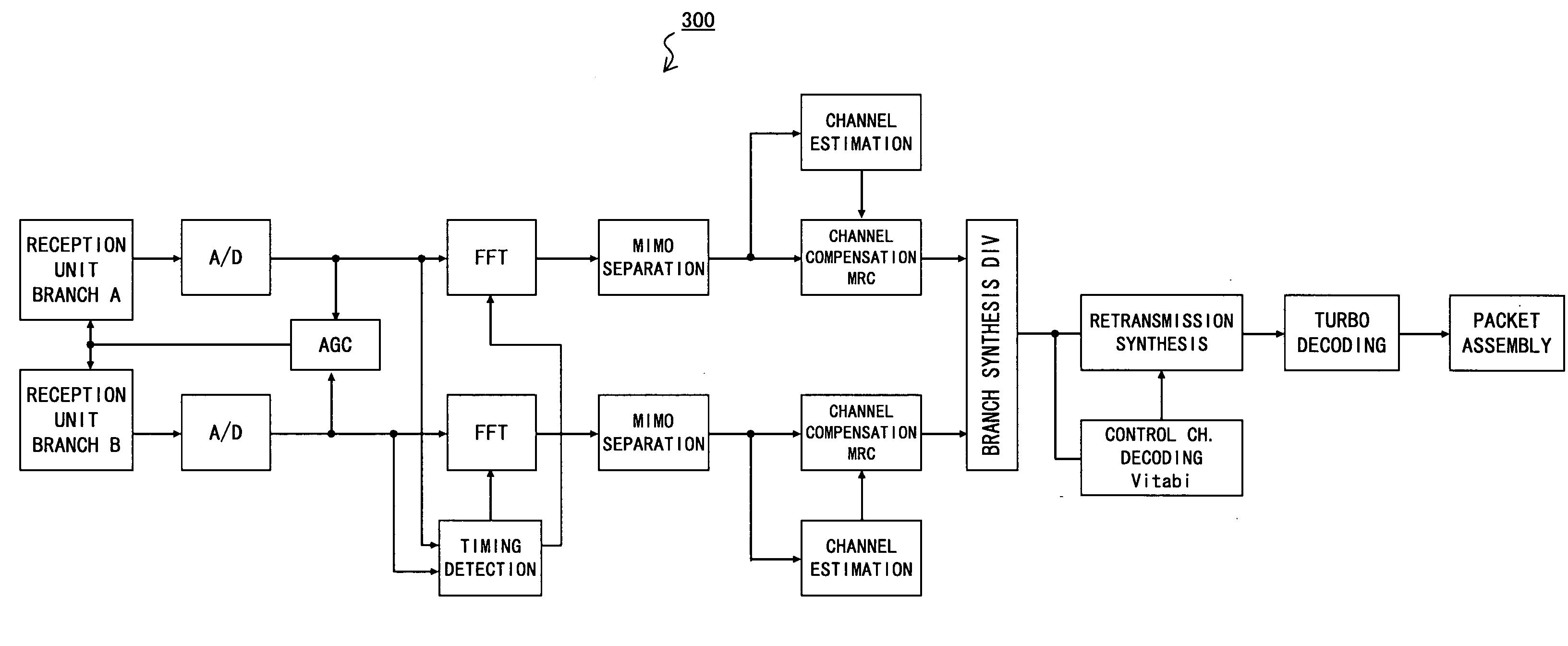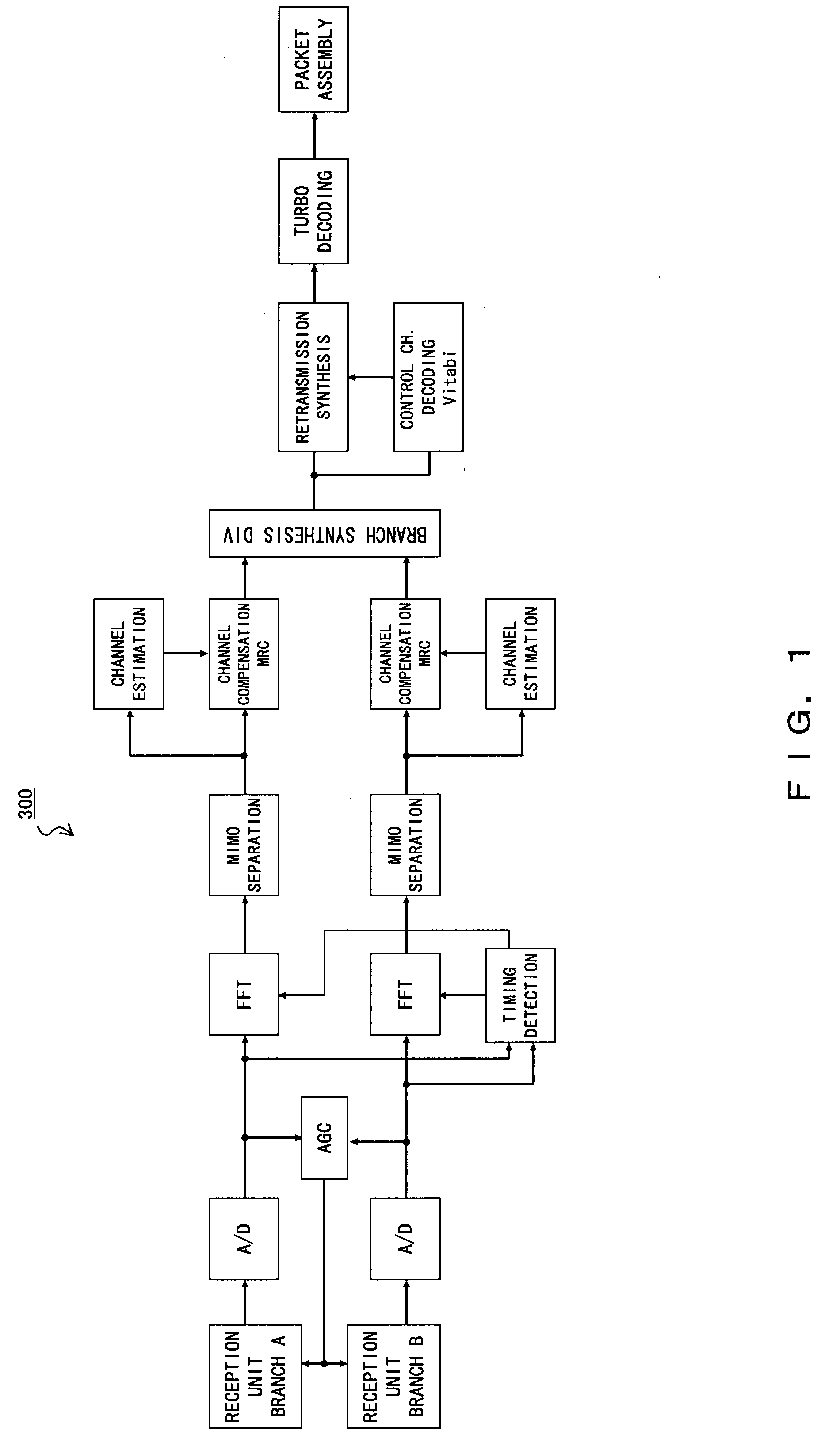Wireless telecommunication apparatus and wireless telecommunication method
a telecommunication apparatus and wireless technology, applied in the field of wireless telecommunication equipment, can solve the problems of increasing the power consumption of a mobile station with increased transmission speed, increasing the number of demodulations in a certain length of time, and suppressing the power consumption of the terminal apparatus, so as to increase the transmission speed, the effect of increasing the transmission speed and increasing the transmission speed
- Summary
- Abstract
- Description
- Claims
- Application Information
AI Technical Summary
Benefits of technology
Problems solved by technology
Method used
Image
Examples
Embodiment Construction
[0033]The following is a detailed description of the preferred embodiment of the present invention, referring to the accompanying drawings.
[0034]FIG. 2 is a configuration diagram of a wireless telecommunication (“wireless telecom” hereinafter) system 1 according the present embodiment. The wireless telecom system 1 employing the TDMA system comprises a base station (BS) 2 and mobile stations (MSs or mobile terminals—abbreviated as “terminal” hereinafter) 3. FIG. 1 only shows one base station 2 and two terminals 3A and 3B as being under the management of the base station 2 in order to simplify the configuration.
[0035]The wireless telecom system 1 employing the TDMA system, e.g., a cellular system of the 3.5 generation and thereafter, is configured to be applicable to many transmission resources, that is, frames are configured to be applicable a terminal 3 having good reception quality, for the purpose of increasing the sector throughput. The terminal 3 with many transmission resource...
PUM
 Login to View More
Login to View More Abstract
Description
Claims
Application Information
 Login to View More
Login to View More - R&D
- Intellectual Property
- Life Sciences
- Materials
- Tech Scout
- Unparalleled Data Quality
- Higher Quality Content
- 60% Fewer Hallucinations
Browse by: Latest US Patents, China's latest patents, Technical Efficacy Thesaurus, Application Domain, Technology Topic, Popular Technical Reports.
© 2025 PatSnap. All rights reserved.Legal|Privacy policy|Modern Slavery Act Transparency Statement|Sitemap|About US| Contact US: help@patsnap.com



